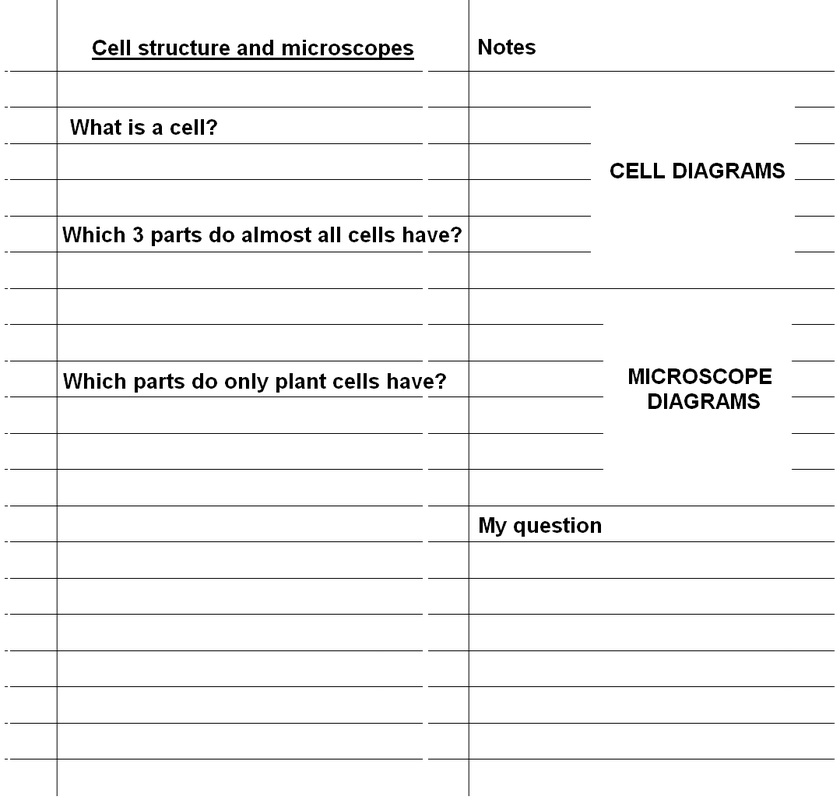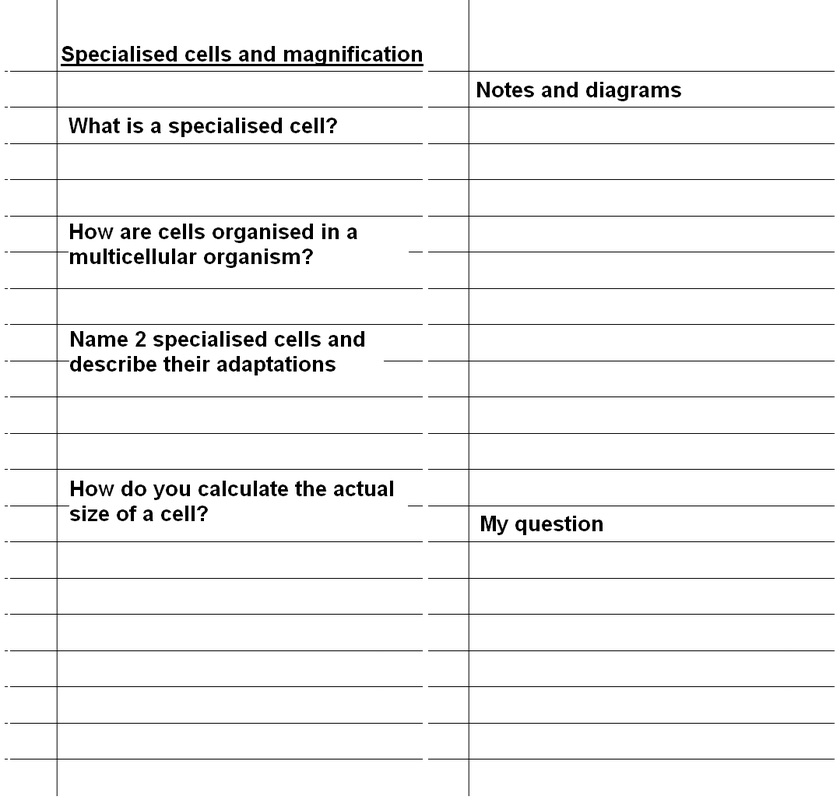IGCSE BIOLOGY
UNIT 2: ORGANISATION OF THE ORGANISM
|
Before you start you can look back at 7A Cells.
This unit builds on your previous knowledge about cell structure and specialised cells. You will then learn about how substances move in and out of cells. If you only remember one thing: PLANT AND ANIMAL CELLS HAVE CELL MEMBRANE, CYTOPLASM AND NUCLEUS |
This is the second of the 21 Biology units:
|
LESSON 1: CELL STRUCTURE AND MICROSCOPES
By the end of this lesson students will be able to:
Before you start the lesson make sure your notebook looks like this:
- Label diagrams of plant and animal cells
- Name the differences between plant and animal cells
- Use a microscope
Before you start the lesson make sure your notebook looks like this:
This lesson has 2 parts:
1. Cells Video
1. Cells Video
2. Microscope simulation
Use this online activity from virtual urchin to label your microscope diagram and practice using the microscope.
Use this online activity from virtual urchin to label your microscope diagram and practice using the microscope.
LESSON 2: cell size and specialisation
By the end of this lesson students will be able to:
Before you start the lesson make sure your notebook looks like this:
- Name at least 2 specialised cells and explain how they are specialised
- Calculate the actual size or magnification of an object seen using a microscope
Before you start the lesson make sure your notebook looks like this:


